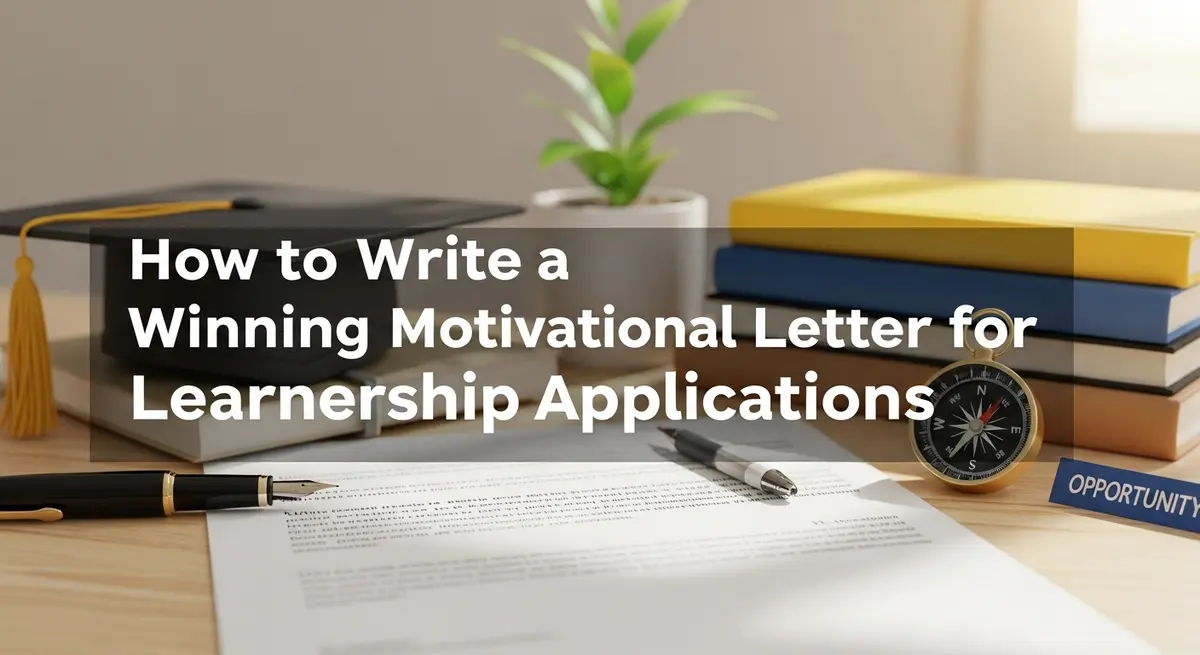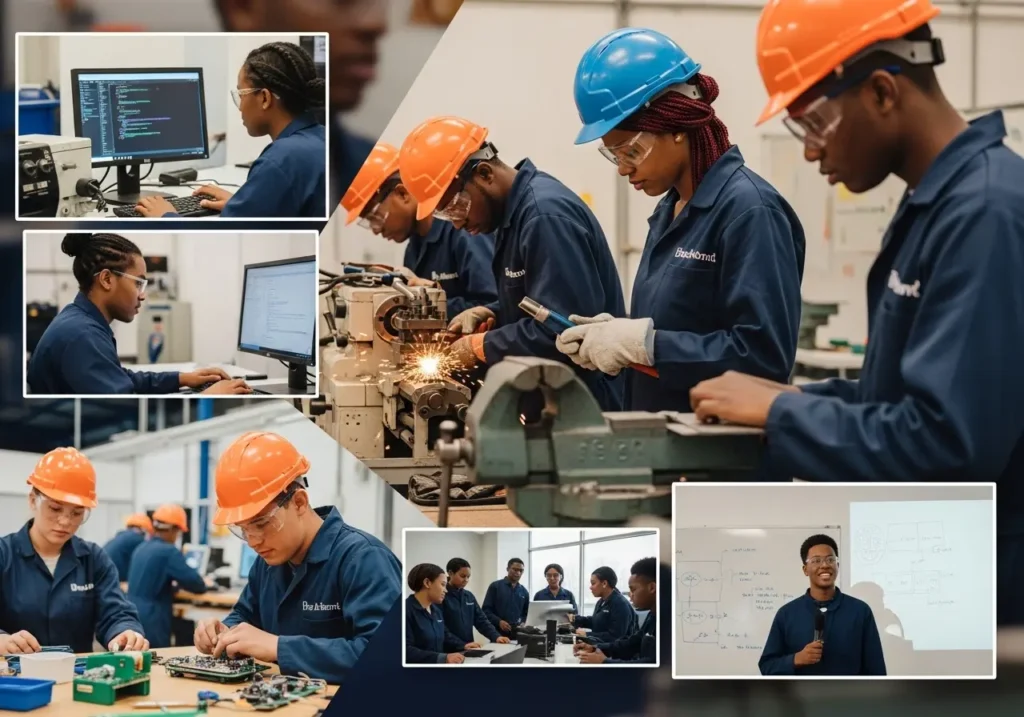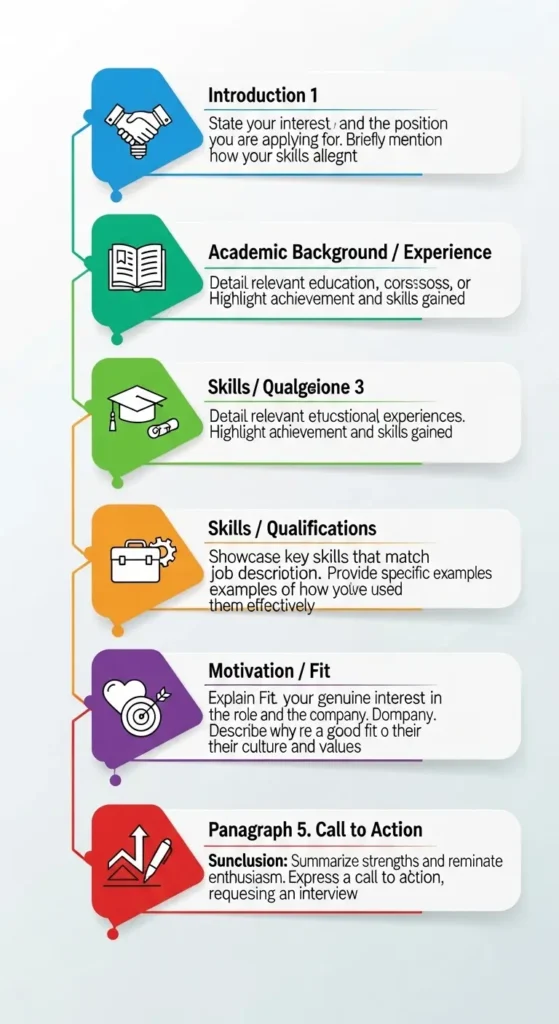
Picture this: You’re sitting at your computer, staring at a blank page, wondering how to convince someone you’ve never met that you deserve a life-changing learnership opportunity. Your heart races because you know this single letter could open doors to your dream career. Don’t worry – you’re not alone in feeling this way, and by the time you finish reading this guide, you’ll know exactly how to write a motivational letter for learnership that stands out from hundreds of other applications.
What Makes a Motivational Letter for Learnership Special?
A motivational letter for learnership is your chance to tell your story in your own words. Unlike your CV that lists facts and dates, this letter lets you show who you really are as a person. Think of it as having a friendly chat with the person who will decide your future – except you’re writing it down.
Many young South Africans have used strong motivational letters to secure amazing opportunities like the Traffic Officer Learnership or other exciting programs. The secret isn’t having perfect grades or fancy qualifications – it’s about showing your passion and commitment.

Why Your Motivational Letter Matters More Than You Think
Companies receive thousands of applications for learnership programs. Your motivational letter is often the first thing they read after your basic details. It’s your chance to make them remember you when they’re choosing who gets an interview.
Here’s what makes the difference: A good motivational letter doesn’t just say “I want this job.” It tells a story about why you want it, what you’ll bring to the program, and how it fits into your life goals.
Step-by-Step Guide to Writing Your Motivational Letter for Learnership
Step 1: Research the Company and Program
Before you write a single word, spend time learning about the company offering the learnership. Visit their website, read about their values, and understand what they do. This research will help you connect your goals with theirs.
For example, if you’re applying for the New Training Force Learnership 2025, make sure you understand what skills they’re looking for and how the program works.
Step 2: Start with a Strong Opening
Your first paragraph should grab attention immediately. Don’t start with boring sentences like “I am writing to apply for…” Instead, try something that shows your personality:
“When I helped my neighbor fix his broken gate last month, I realized that working with my hands and solving problems makes me feel truly alive. This is why I’m excited about the opportunity to join your learnership program.”
Step 3: Tell Your Story
Share experiences that shaped who you are today. Maybe you helped at your local community center, or you fixed things around your house. These stories show your character better than just saying “I am hardworking.”

Step 4: Connect Your Goals with the Program
Explain clearly why this specific learnership fits your plans. Show that you’ve thought about your future and how this opportunity helps you get there.
Step 5: Show What You’ll Bring
Even if you don’t have work experience, you have skills and qualities. Maybe you’re good at helping friends solve problems, or you never give up when things get difficult. These matter more than you think.
Step 6: End with Confidence
Your closing should be strong and positive. Thank them for considering you, and express confidence about contributing to their program.
Common Mistakes to Avoid
Don’t copy templates word-for-word. Companies can spot generic letters easily. Use templates as guides, but make your letter personal and unique.
Don’t focus only on what you want. Show what you can give to the program, not just what you hope to get from it.
Don’t write too much. One page is usually enough. Keep it clear and direct.
Don’t forget to proofread. Spelling mistakes and grammar errors make a bad first impression.
Sample Structure for Your Motivational Letter for Learnership
Here’s a simple structure you can follow:
Paragraph 1: Hook them with an interesting opening that shows your passion Paragraph 2: Share a personal story that demonstrates your relevant qualities Paragraph 3: Explain why you want this specific learnership and how it fits your goals Paragraph 4: Describe what you’ll contribute to the program Paragraph 5: Close confidently and thank them for their time

Real Tips from Successful Learnership Applicants
Based on feedback from program coordinators and successful applicants across South Africa, here are insider tips:
Be specific about your interest. Instead of saying “I love working with people,” say “I enjoyed helping elderly customers at the local shop where I volunteered, especially when I could solve their problems.”
Show your commitment. Mention concrete steps you’ve taken to prepare for this field, like reading related books or watching educational videos.
Address challenges honestly. If you faced difficulties in school or life, briefly mention how you overcame them. This shows resilience.
Use simple, clear language. You don’t need big words to impress anyone. Clear communication is more valuable.
Making Your Letter Stand Out
Include specific details about the company or program that attracted you. This shows you did your homework.
Use active voice instead of passive voice. Say “I organized a fundraiser” instead of “A fundraiser was organized by me.”
Show enthusiasm without going overboard. Your excitement should feel genuine, not forced.
Connect your past experiences to the learnership, even if they seem unrelated. Leadership in school sports can show teamwork skills valuable in any workplace.
Formatting Your Motivational Letter for Learnership
Keep your letter professional but friendly:
- Use a standard business letter format
- Choose a clean, readable font like Arial or Times New Roman
- Keep it to one page
- Leave white space so it’s easy to read
- Include your contact information at the top
What Happens After You Send Your Letter?
After submitting your motivational letter for learnership, patience becomes important. Companies usually take several weeks to review applications. Use this time to:
- Continue improving your skills
- Research more about the industry
- Prepare for possible interviews
- Apply to other programs as backup options
Building Your Future Through Learnerships
Remember that writing a motivational letter for learnership is just the beginning of your journey. These programs offer incredible opportunities to gain skills, earn qualifications, and build networks that last a lifetime.
Many successful South Africans started their careers through learnership programs. They combined determination with the right opportunities to build amazing futures for themselves and their families.
Your motivational letter is more than just an application document – it’s your first step toward transforming your dreams into reality. Take time to craft it carefully, be honest about your goals, and show the unique value you’ll bring to the program.
The most important thing to remember is that everyone starts somewhere. Your background doesn’t define your potential – your commitment and willingness to learn do. Write your letter with confidence, knowing that you have something valuable to offer.
Whether you’re interested in technical skills, business opportunities, or specialized programs, there’s likely a learnership that matches your interests and goals. Take that first step by writing a compelling motivational letter that opens doors to your bright future.
Your journey to success starts with a single letter. Make it count, make it yours, and make it the beginning of something amazing.





